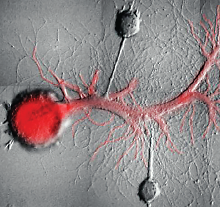Transgender Students May Think About Suicide More Than Peers
Using data from a representative sample of U. S. youth, researchers have found that transgender teens have nearly three times the odds of suicidal ideation as their peers. The findings provide the first information on gender identity–related disparities in suicidal ideation, as well as some potential factors that may contribute to this disparity.
This study, a joint effort of Columbia University and the University of Texas, was published in the Journal of the American Academy of Child and Adolescent Psychiatry.
The data were derived from high school students who participated in the 2013-2015 California Healthy Kids Survey and the biennial California Student Survey; the final sample included over 600,000 students.
The study authors found that prevalence of past 12-month self-reported suicidal ideation was nearly twice as high for transgender youth compared with non-transgender youth (33.73 versus 18.85 percent), which calculated to 2.99-fold higher odds of suicidal ideation for transgender youth after adjusting for other variables.
The higher prevalence of depression and/or school-based victimization among transgender youth partially accounted for the association between gender identity and suicidal ideation; however, the study authors estimated that these factors only explained approximately 14 percent to 17 percent of the association.
“This underscores the need for future scholarship to assess additional social and structural factors—such as state-level legislation that promulgates stigma against transgender youth—that may explain why transgender youth are at heightened risk for suicidal ideation relative to non-transgender youth,” they wrote.
Study Suggests Memories Can Be Selectively Erased
A study in the marine snail Aplysia suggests that negative memories may be able to be erased without interfering with other, positive memories, even if they are part of the same neuronal circuit.
The findings, published in Current Biology, suggest that it may be possible to develop medications that specifically target maladaptive memories that trigger anxiety or posttraumatic stress disorder without affecting other memories.
For this study, researchers at Columbia University Medical Center and McGill University designed a simple brain circuit in which two Aplysia sensory neurons were connected to a single motor neuron. One sensory neuron was stimulated to induce an associative memory and the other to induce a non-associative memory.
The investigators found that each connection with the sensory neurons was maintained by a different form of a protein known as protein kinase M (PKM) in the motor neuron; PKM Apl III was expressed at the synapse of the associative memory while PKM Apl I was at the non-associative synapse.
These two variants of PKM are produced by two different enzymes. The researchers found that each memory could be erased by blocking one of the two PKM molecules, thus removing one memory without affecting the other.
The findings offer “a cellular basis for developing therapeutic strategies for selectively reversing maladaptive memories,” the researchers reported.
Protein Provides Link Between Parkinson’s, Alzheimer’s Disease
A study from a research team at Singapore’s National Neuroscience Institute has uncovered a novel connection between Parkinson’s and Alzheimer’s disease.
The connection involves a protein known as leucine-rich repeat kinase 2 (LRRK2); mutations that over-activate LRRK2 are associated with about 40 percent of inherited forms of Parkinson’s.
Using mouse models, the investigators found that mutant LRRK2 can modify the Alzheimer’s-associated amyloid precursor protein (APP) in dopamine-producing neurons.
Once modified, the APP gets chewed up by enzymes, and a resulting fragment known as the APP intracellular domain travels to the nucleus and alters the expression of important genes related to cell structure and apoptosis (programmed cell death); this eventually triggers the death of the neuron.
The researchers found that LRRK2 inhibitors could prevent this cell death in both their mouse models and neurons cultured from human Parkinson’s patients.
These findings, which were published in Science Signaling, “link LRRK2 and APP, two important proteins involved in two of the most common neurodegenerative diseases,” which may open up new possibilities for future therapies for both disorders, the authors wrote.
Increasing Marijuana Use in Adolescence Said to Be Risk Factor for Psychosis
Adolescents who transition from occasional marijuana use to more frequent marijuana use appear to be more likely to experience recurrent psychotic-like experiences, according to researchers at the University of Montreal.
The findings, published in the Journal of Child Psychology and Psychiatry in July, were based on an analysis of a cohort of 2,566 adolescents in the Montreal area. The adolescents, aged 13 to 16, completed computerized questionnaires that assessed substance use, psychiatric symptoms, and performance on cognitive tasks annually for four years.
The researchers first identified three trajectories of psychotic-like experiences in the group: about 84 percent of teens had a low frequency of events that decreased over time, 8 percent had more frequent events that decreased over time, and 8 percent experienced an increase in the frequency of psychotic-like experiences.
A steeper growth in cannabis use from ages 13 to 16 was associated with a higher likelihood of being assigned to the increasing psychotic-like experience trajectory (odds ratio, 2.59); this association was partially explained by growth in depression symptoms among frequent cannabis users, but not anxiety symptoms or changes in cognitive functioning, the authors reported. ■




